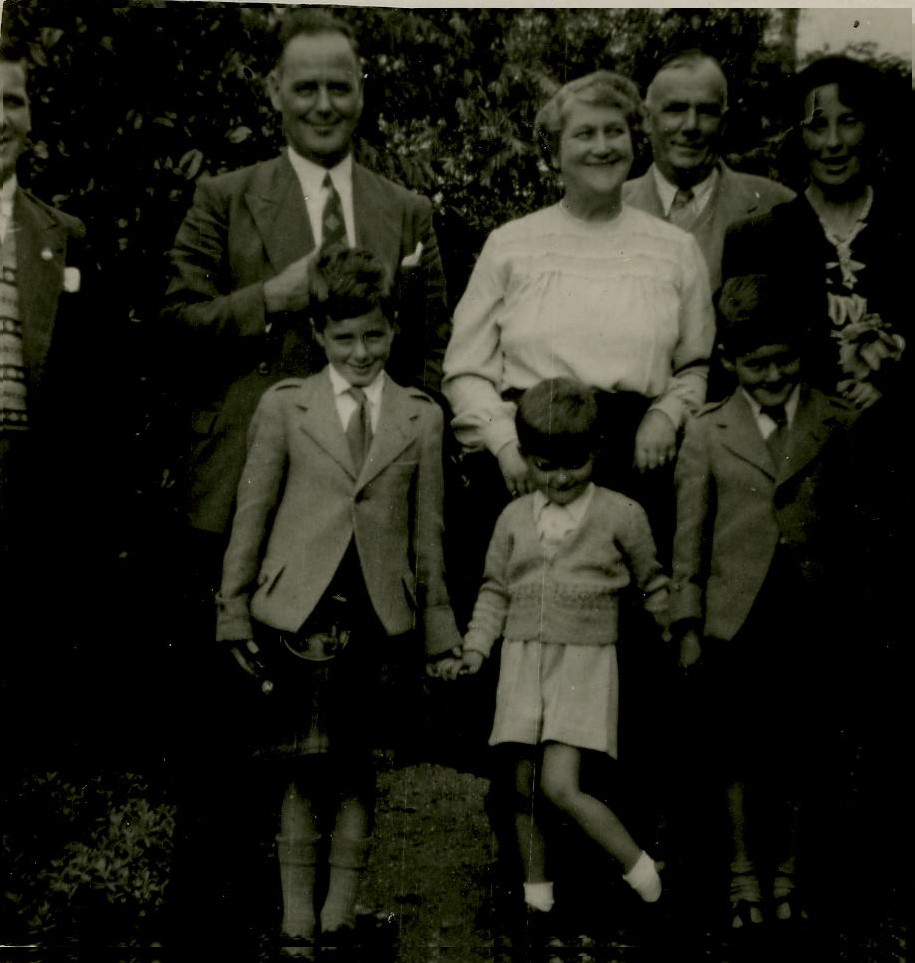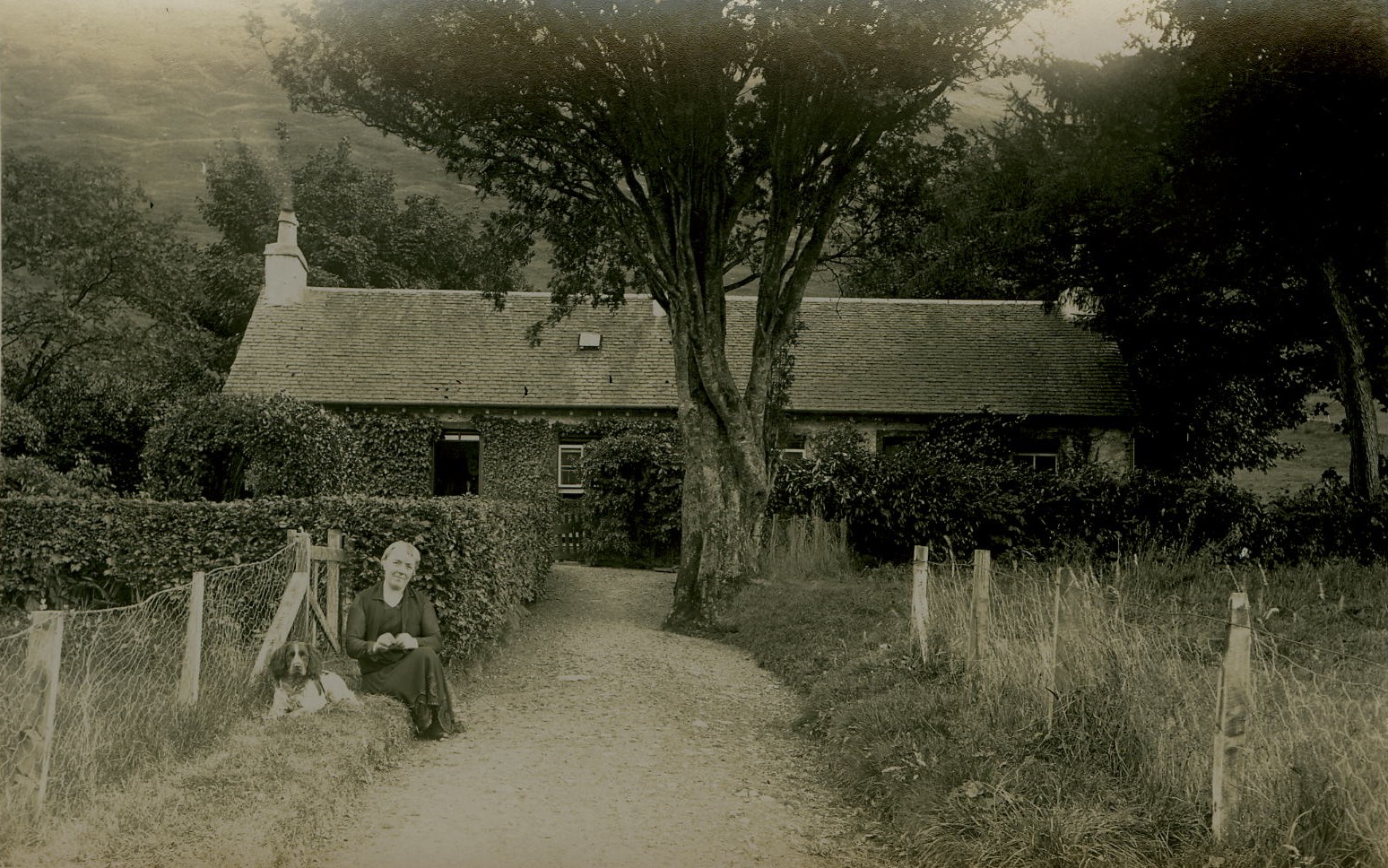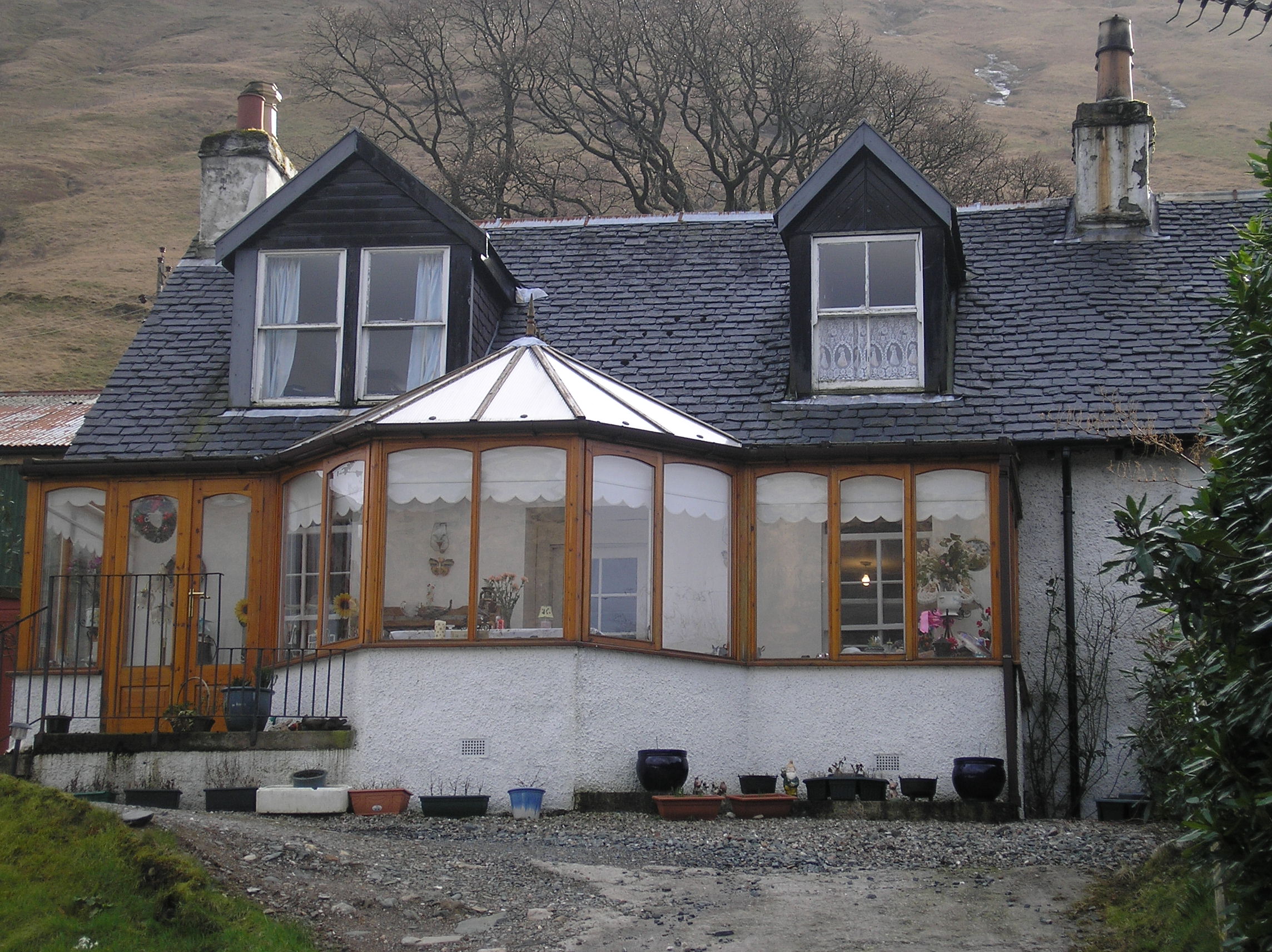Upper Glaschoine | 31 occupants (1841 - 2025)
1. Introduction
Tom Addyman and Tanja Romankiewicz of Addyman Archaeology undertook a further analytical assessment of six buildings within Kilmorich parish at Cairndow, near Inveraray, Argyll. The assessment will feed into the Our Homes ? Their Stories project, part of the Heritage Lottery funded local history initiative being organised by the Here We Are centre at Cairndow (contacts, Christina Noble, Alice Beattie and Dot Chalmers). The site visit was undertaken on Monday 19th April, 2010.
The purpose of the exercise was to undertake an outline analysis and photographic record of a selected group of properties of varying age, state of preservation and function. The examination of each building involved a written description by Tom Addyman, b
i. General
Upper Glaschoine is a one and a half storey building which forms the northern half of a pair of cottages. The cottage appears originally to be of tripartite arrangement with its principal frontage facing Loch Fyne to the west. The building appears on the First Edition OS map (6 inch edition), surveyed in 1870. It is owned by Amelia and John Mirrlees.
ii. Exterior
This is a stone built cottage, roughcast over painted white under a double pitched slated roof with west Highland slates set in diminishing courses. There is a double chimney at the north gable with ceramic pots with a continuous drip coarse towards the top. The party wall at the boundary between the two cottages is occupied by a further stack with two cans above of pale ceramic.
At ground floor level there was a central entrance with a window on either side. At first floor level it is not clear what the original arrangement had been. There are now two dormers, one offset to the south and one to the north. The one to the south is the earlier and somewhat smaller, the one to the north being double-width and certainly later. These have double pitched roof and slated sides and black painted fascias.
There had originally been a small porch on the principal frontage at the entrance. This was replaced by a larger porch, apparently in the 1930s, and finally, in the late 1990s, by the existing substantial conservatory that extends along much of the present west frontage (work undertaken by John Gibbon). The conservatory is built on a brick and concrete base, the vertical surfaces of which are harled over and painted white. The conservatory has a central broad canted bay underneath a hipped roof structure and tall glassed windows, varnished wood. The stair rises up in four steps from the north to a small landing giving access to double-doors that provide entry to the conservatory. The interior is pine floored.
The original frontage wall of the house has been rendered flat and painted cream. There is an iron handrail on the west side of the stairs up to the conservatory. The north gable wall of the cottage is harled over and there is a single window, containing a modern frame. The sill appears to be tiled. The rear extension appears to occupy much of the width of the east back wall of the original cottage. This is offset slightly to the south. It rises up to a double-pitched roof which is cement tiled. The rear wall to the east is harled over and painted cream. This main gabled structure is offset slightly to the south, because space was required for a small glassed-in back porch at the re-entrant angle to the north-east. This also seems to be of block work construction, harled over and painted white with glazing on the east and north sides, and an entrance in at the east end of the north wall. Directly opposite this at the east end of the north wall of the gabled projection is the entrance into the rear wing proper. At ground floor level there is a large kitchen to the south and on its north side, a small back door toilet and shower room. Both kitchen and the shower room have windows east facing. The shower room is textured glass; the kitchen window has three panes, with opening outer panes hinged to the north and south.
The dormer extension at the rear pitch of the original roof structure of the cottage is slate, sided upon wooden frames with felt roofing on a flat roof above.
Before the construction of the current extension there had been a previous rear extension with a lean-to corrugated tin roof. This was apparently a single-storey extension similar in character to the one on the neighbouring property to the south. Part of this is incorporated into the existing rear extension. The original extension was apparently built in the 1930s when the cottage was equipped with a toilet together with fresh water pipes and a sewage tank. The doubled-pitched upper part of the extensions was built in the 1980s.
iii. Interior ? Ground Floor
The principal entrance has now been formed into an internal entrance from the conservatory to the interior. This leads into what had been a small vestibule with the stair rising up in a straight flight; originally with an entrance on either side. The original entrance to the south within the original vestibule and the partition walling to the south of the stair have both been removed to open up the interior. This is now the living room. The existing handrail of the stair is of modern varnished timbers running down to a vertical newel at the angle.
The principal feature of the living room is the fireplace in the centre, slightly offset to the east of the south wall. The fireplace itself is modern formed of grey tiling. The room is lit by a window in the west wall, containing a sash-and-case arrangement, each sash of four-over-four and with a narrow gothic glazing bar profile. The panes are slightly horizontal. The window is now within the modern conservatory.
At the west end of the south wall there is a recess, evidently a former press. There is a small under stair cupboard towards the east end of the north wall. Beyond this is an entrance that angles around to the east providing access to the out shots to the rear. Here one step rises up to the concrete floor and into the kitchen, which extends off to the south (see above). There are fitted units to the east and the west otherwise the interior is very simply finished and lined board work and joinery in this area is very simple, architraves simple applied strips at rounded angles and hardboard doors within.
Plate 59: Fire place in S wall of S room, ground floor.
Plate 60: W window in S room, from modern conservatory.
Plate 61: Stair from upper landing; partition wall to S replaced by modern handrail.
The downstairs toilet and shower room is accessed by a sliding door off a little vestibule between the kitchen and the rear porch (se above). The toilet and shower are of an avocado coloured suite. The rear door is glazed and varnished and the door to the porch is glazed above and varnished, four panelled below, nine paned above.
The northern principal ground floor room has a window similar to the living room. This is now a bedroom. There is a fireplace in the middle of the north gable wall. This is modern of pieces of grey stone with a large hardwood lintel above. The window in the north gable at the north-west corner appears to be a secondary insertion.
iii. Interior ? First Floor
The staircase rises in a straight flight and although the lower south side of the staircase has been opened up into the lower ground floor room, the stair itself is the original structure, at least since the 1930s. This rises up to a landing at first floor levels, the cross walls at either side are the originals until you reach the landing and where there has been considerable rearrangement. This has to do with the addition of a rear wing and the continuous dormer projection out of the rear pitch of the roof. The dormer projection involved the removal of much of the rear pitch of the roof and the insertion of a full height ceiling and additional vertical walling off the original wallhead. This meant that the existing coombed ceiling was removed on the east, however ,on the west side facing the Loch, this all survives intact so the original arrangement can be seen.
At the head of the stairs the landing leads to an entrance slightly offset to the south, into an upstairs bathroom. Two steps up go into this interior; there is a bath on the south side and the WC to the northeast. A central window within the gable wall to the east, this of two panes, one fixed one hinged to the south on the south side. This window is with textured glass. Internally the interiors are lined out with plasterboard and papered.
The stairwell interior and the hall at the head of the stairs are painted a light peach/apricot colour. The woodwork throughout is of a very simple character. The doors are hardboard, the architraves are simple applied strips with rounded angles. The door into the bathroom is four panelled, the upper two panels glazed with frosted glass. This is a modern door.
On the west side of the landing to the south there is a wall/linen press. The landing provides access to the south to the large bedroom. As previously described, this has had its roof structure raised to the rear where there is a single window at the south end of the east wall. The west wall contains a central dormer window which contains a sash-and-case, two-over-two fillet-and-ovolo profile glazing bar. If there had been a fireplace in the south gable this is now no longer visible. The interior is lined out and papered.
The room leading off the landing to the north is a further bedroom. This has a dormer window that is slightly larger than the one to the south in west wall. The window within is mullioned and there are sash-and-cases, one-over-one, within this which are modern. Interiors are wholly lined out. Again, if there had been a fireplace in the north gable wall this is now obscured. In the rear roof projection there is a broad window at the north end of the east wall. This is centrally mullioned and has single panes on either side, hinged above.














